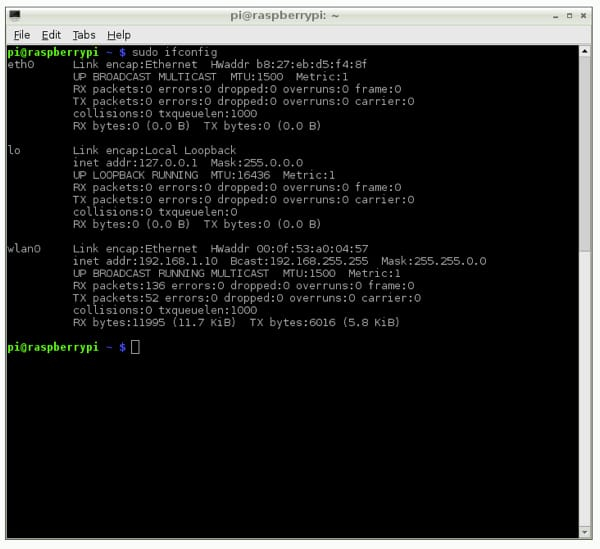Objectives and Overview
This lesson introduces IP addresses and provides steps for locating your Raspberry Pi’s IP address. Additionally there is a brief introduction to DNS and the role that DNS has in serving and accessing websites.
Lesson Objectives
- Explain the difference between internal and external IP addresses.
- Discover the role that DNS plays in connecting domain names and server IP addresses.
- Identify your Raspberry Pi’s IP address.
IP Addresses
You’ve probably heard the term IP address somewhere in your internet exploration, but let’s take a deeper look at what an IP address actually is. IP addresses are the core of the internet. Every website on the internet has a server with an IP address that serves the content. While you see and remember the addresses of these sites by the human-readable domain names, computers only use IP addresses. It’s important to understand the basics of IP addresses since this is a crucial web concept. Let’s dive in!
Raspberry Pi’s IP Address
As soon as your Pi connects to the internet on the local network, it has an IP address. This is true for any device that connects to a Local Area Network. It’s important to know how to find your Pi’s IP address, especially in the context of this course. You’ll need to know the IP address to connect via ssh, which is something that is covered in a later lesson. For now, let’s look at how to find your Pi’s IP address.
There are two main ways to find your IP address. The first requires a display, whereas the second can be done strictly through the command line. You won’t always have access to a display, especially if you’re working on the Pi in a web project. Since this course focuses on using the Pi in a web setting, you’re going to find your IP address via the command line in Terminal.
Finding Your IP Address
There is a command line command that finds your Pi’s IP address. Open up the Terminal application in your Pi. Next, type the following command: sudo ifconfig.
This will return your Pi’s IP address. Check out this screenshot taken from Adafruit’s blog:
This command returns lots of information. Your IP address is found in the wlan0 section next to the inet addr. In the above example, the Pi’s IP address is 192.168.1.10.
If you’d rather watch a video, here’s a short demonstration from howtwos101 demonstrating the process:
Video Credit: howtwo101s
Identifying an Internal IP Address
Notice that IP addresses are a series of four numbers, separated by periods. The IP address in the previous example, 192.168.1.10, starts with the numbers 192.168 — this signals that it’s an internal address. If an address starts with either 192.168 or 10.0, then it’s an internal address. You’ll be able to get outward from your Pi, but you’re going to need to do more configuration to set up your Raspberry Pi as a web server. This will be covered in later lessons.
For additional reading, check out this Adafruit article: Finding Your Pi’s IP Address.
DNS
DNS stands for Domain Name Server. Essentially, this is what transfers the text of a domain name into an IP address. While the domain name text is easy for humans to write and remember, computers need to translate these into the IP addresses. Computers access websites via IP addresses. Each server that serves web content has an IP address that is accessed by other computers, such as your web browser.
Imagine how difficult it would be to remember every website as a series of numbers instead of domain names. It’s much easier for us to remember websites as readable words instead of numbers, but computers need to be able to translate these words into numbers. The computer needs the actual IP addresses but it would be nearly impossible to remember all of the IP address combinations for the number of websites on the internet.
The DNS is what glues this together. When you register for a new domain name for a website, part of the process is connecting your domain name to the IP address of the server.
Here is some additional reading on the history of DNS: Link to the article ‘What is DNS?’
Activity: Finding Your IP
The objective of this quick activity is to determine your Pi’s IP address. This process is fairly quick and can be done by following the steps (or video) outlined in this lesson.
- Open a command line prompt
- Use the
sudo ifconfigcommand to find your IP address - Write down (or memorize) your IP address
